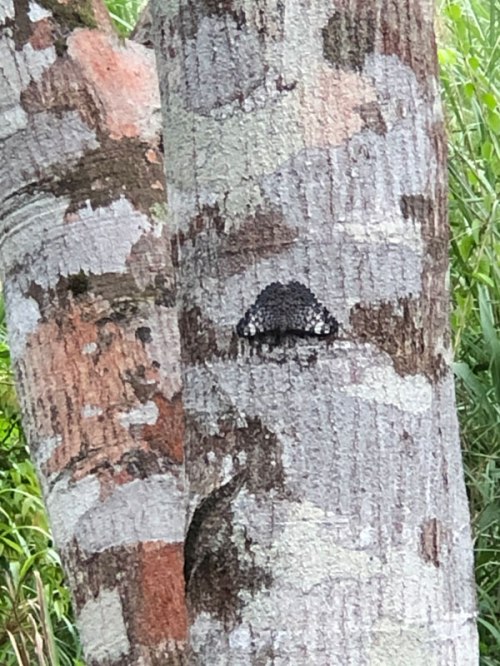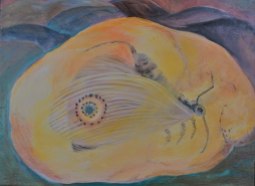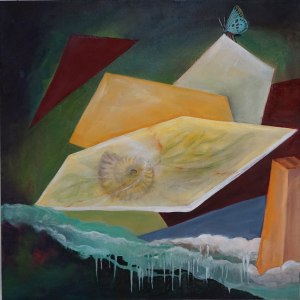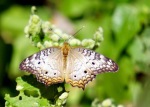Here is a new wrinkle in the ongoing technology path of taking a picture. It is called “digi-scoping” or maybe “phonescoping”… it is using a digital camera phone with a telescope. In Panama our guide to finding amazing butterflies was looking thru his spotting scope at a dime-sized tiny butterfly sitting on a tree trunk 25 feet away from us. “Here is a Dirce butterfly” he said. I looked thru my binoculars and there was a patterned beauty, Tino gestured and said “Give me your Iphone”. I handed it over, he positioned it in front of the spotting scope, carefully moved it in minute increments to the perfect place, CLICK, and look at this wonderful photo.

Dirce Butterfly
The Dirce butterfly captured on my Ipnone. Marvellous!
Walking further down the deserted dirt road, Tino points to another tree 30 feet away and says “There is a Two Eye Eighty Eight butterfly on that trunk.” I squint, look thru my binoculars and see an itty-bitty blob. He again takes my Iphone and works his magic … an image of a butterfly with two black spots shows on my Iphone. “Can I try? ” I ask. He gives me the Ipnone and I move the lens close … closer … too close … back a bit. No luck … no image emerges … AND … the little guy flies away. This is much harder than it looks when watching Tino. A delicate touch, and lots of practice is required!

Two Eye Eighty Eight
Arriving at our lodge we are handed an empty plastic bottle and a man says “ Please fill this with your urine tonight to add to our ‘fermented brew’ which is sprayed on leaves along the trail. It attracts a lot of butterflies.” We are hot, tired, and fresh off our flight from the U.S., and it seems a strange request … but we comply and the next day, when we go out on the trail in the Panama jungle, we are rewarded with the Inca Metalmark butterfly sitting on the leaf sprayed with the brew. Phew! Who knew?

Inca Metalmark
Here is the Canopy Tower

Canopy Tower
It used to be a radar tower built by the U.S. and abandoned years ago. Then it was converted into a hotel where birders and butterfliers stay as they look down on the tops of the tropical trees where many creatures spend their days. The deck four floors up provides a place to view toucans, monkeys, and butterflies. Many happy hours are spent seeing a whole different world.














































